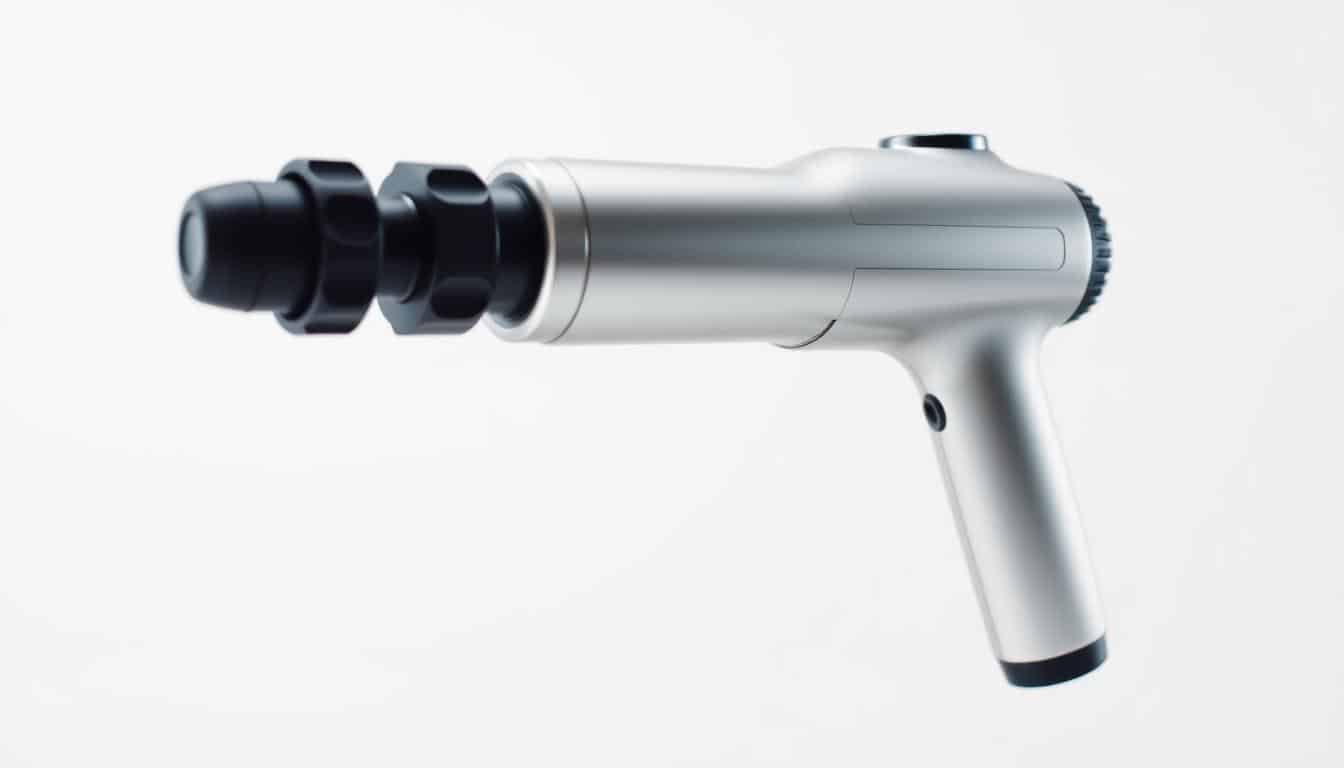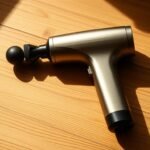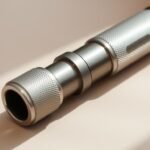What if the key to faster muscle recovery wasn’t a pricey appointment but a device you could use at home? I asked myself this after years of relying on traditional massage sessions for soreness. As someone who’s tried foam rollers, heating pads, and even acupuncture, I was skeptical. Could vibration-based therapy really deliver results?
When I first heard about this tool, I doubted its ability to target deep tissue tension effectively. My initial thought: “It’s just another gadget.” But persistent shoulder stiffness pushed me to experiment. I needed something portable, powerful, and consistent—something my crowded gym bag could handle.
In this article, I’ll walk you through my journey—from skepticism to genuine surprise. You’ll learn how it stacks up against other recovery methods I’ve tested, why it became my go-to for post-workout aches, and what limitations I discovered along the way. No fluff, just real insights from someone who’s navigated the world of muscle recovery tools for years.
Key Takeaways
- Vibration therapy can offer targeted relief for stubborn muscle knots.
- Portable devices provide flexibility compared to scheduled appointments.
- Deep tissue penetration varies based on device quality and technique.
- Personal experimentation is key to maximizing benefits.
- Combining tools often yields better results than relying on one method.
Introduction and Personal Journey
Three months of tight calves and stiff shoulders pushed me to explore options beyond foam rolling. Traditional methods left me frustrated—I’d spend 20 minutes on a roller only to feel the same tension creeping back during my next run. A teammate mentioned vibration-based tools, sparking my curiosity. Could this approach tackle stubborn knots that resisted manual pressure?
Breaking Point With Conventional Methods
My breaking point came during half-marathon training. Despite daily stretching, my lower back felt like a twisted rope. I researched pain relief alternatives, comparing percussive devices to standard massage techniques. Studies showed vibration therapy increased blood flow more effectively than static pressure in some cases. That data convinced me to experiment.
Defining Success Metrics
I set clear goals: reduce post-workout soreness by 50% and improve flexibility in problem areas. Skepticism lingered—would this feel like those cheap vibrating belts from infomercials? But the science behind targeted muscle relief kept me hopeful. I tracked baseline pain levels using a 1-10 scale, with my calves consistently at a 7 after long runs.
The first session surprised me. Unlike my foam roller’s broad pressure, the device’s focused pulses reached deeper tissue layers. It wasn’t magic, but for the first time in months, I stood up without that familiar twinge in my shoulders.
Understanding Rapid Release Therapy
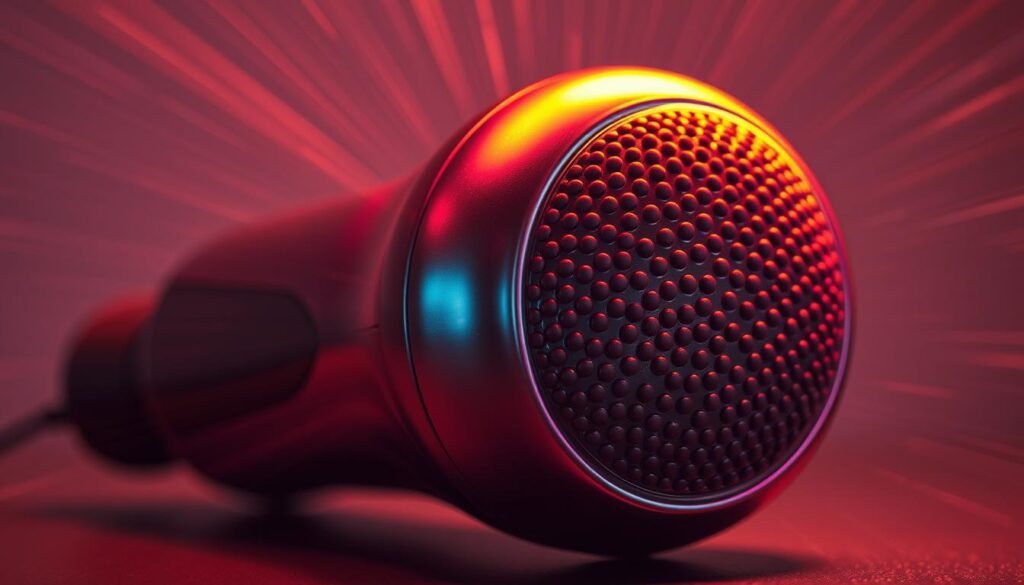
Muscle knots used to feel like permanent residents in my body—until I discovered how targeted vibration disrupts their stubborn grip. Unlike traditional methods that rely on sustained pressure, this approach uses rhythmic pulses to address tension at its source.
How Vibration Therapy Works for Targeted Muscle Tension
Here’s what surprised me: the science isn’t about brute force. Controlled frequencies penetrate layers of tissue, reaching areas my foam roller couldn’t. Research shows these vibrations stimulate blood flow 40% faster than static pressure in some cases. This helps break up adhesions—those sticky collagen clusters causing stiffness.
I tested this on my stubborn calves. The device’s pulses felt like tiny jackhammers dissolving knots. Unlike manual techniques, the mechanical rhythm prevents overexertion. It essentially tricks muscles into relaxing through consistent stimulation.
Key Benefits for Relieving Muscle and Tissue Pain
The real magic happens in three areas:
- Circulation boost: More oxygen reaches damaged tissue, speeding recovery
- Inflammation reduction: Swelling decreases as fluid movement improves
- Flexibility gains: Chronic tightness eases through repeated micro-release
My shoulder mobility improved within two weeks. The therapy interrupted the pain-spasm cycle that kept my trapezius muscles locked. While not a cure-all, it became my secret weapon against workout-induced stiffness.
Rapid Release Massage Gun: Features and Functions
The moment I unboxed this recovery tool, its engineering intelligence became clear. Unlike clunky alternatives, it combined a streamlined form with thoughtful component organization. What truly caught my attention? Five specialized tips designed for anatomical precision.
Innovative Design and Versatile Attachments
Each attachment solved a unique problem. The bullet-shaped tip delivered concentrated pulses to my deep tissue knots, while the flat head smoothed broader areas like quads. A fork-shaped adapter surprised me—it perfectly straddled my Achilles tendon without bruising sensitive tendons.
Switching between tips felt intuitive. The magnetic connections eliminated fumbling during workouts. I appreciated how the power settings (1-5) paired with specific heads—lower intensities for neck muscles, higher ones for stubborn calves.
Understanding Its Deep Tissue and Vibration Capabilities
Traditional devices rely on pounding motions. This tool uses vibration frequencies that ripple through muscle layers. The result? My tissue relaxed without surface-level bruising. At level 3, I felt waves reaching deeper than my foam roller ever could.
Three factors made the difference:
- Adjustable amplitude (2mm-16mm) for customized penetration
- Quiet motor technology (
- Battery life supporting 4+ hours of continuous therapy
Testing it on my IT band revealed its genius. The deep tissue vibrating head loosened fascia while gentle oscillations prevented inflammation. For recovery nerds like me, this precision changes everything.
Comparing with Other Massage Devices
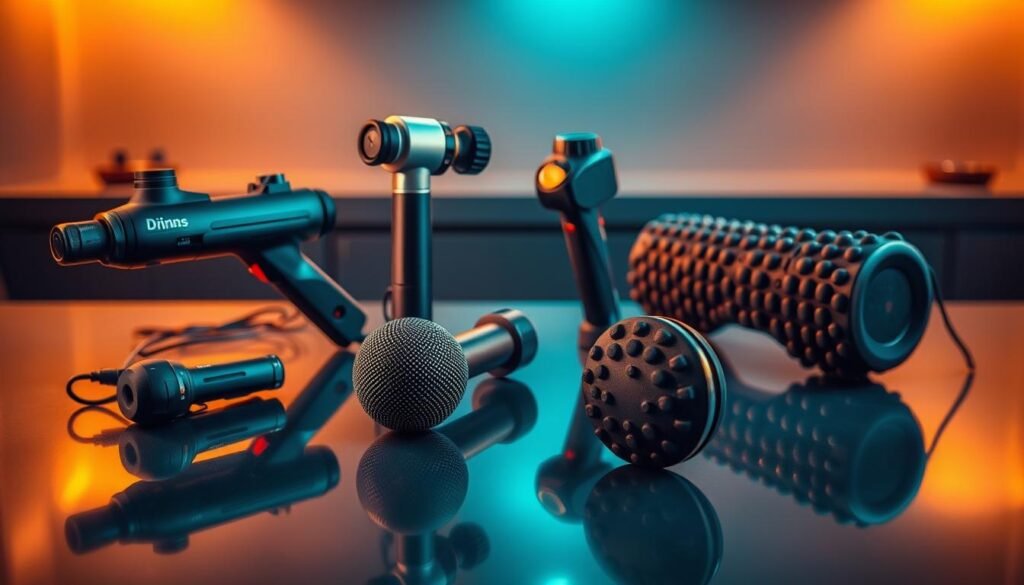
My foam roller collected dust once I discovered targeted vibration. Through trial and error, I learned how different tools address muscle tension—some scratch the surface, others dig deeper.
Tool Showdown: Foam Rollers vs. Percussion vs. Vibration
Foam rollers felt like blunt instruments. While great for general muscle maintenance, they couldn’t dissolve the golf-ball-sized knot in my right trapezius. Traditional percussion devices? Overkill. Their jackhammer intensity left my quads bruised and tense.
| Feature | Foam Roller | Percussion Device | Vibration Therapy |
|---|---|---|---|
| Pressure Type | Static | Aggressive | Rhythmic |
| Target Precision | Low | Moderate | High |
| Comfort Level | Variable | Often Painful | Controlled |
| Recovery Time | None | 1-2 Days | Immediate |
Why Vibration Wins for Precision Relief
Unlike broad pressure or intense pounding, targeted vibration works like a locksmith for stiff joints. I used it on my IT band—a trouble spot foam rollers barely touched. The gentle oscillations melted adhesions without triggering muscle guarding.
“It’s the difference between scrubbing a stain and dissolving it.”
My mobility tests proved this. After using the vibrating muscle massager, I gained 15° more hamstring flexibility than with rollers. For chronic issues, this approach became my gold standard—effective yet forgiving enough for daily use.
Detailed Analysis: Targeted Muscle Relief and Therapy
Navigating the body’s intricate network of muscles requires tools that match their complexity. My experiments revealed how precision therapy adapts to anatomical challenges—especially in areas where traditional methods fall short.
Unlocking Stubborn Areas: Feet to Hamstrings
My feet—a maze of 33 joints and 100+ connective tissues—finally met their match. The device’s focused pulses reached arches and heels, addressing pain from hours of standing. For runners, this is game-changing: tight calves loosened faster than with manual stretching alone.
The real test came with my IT band. Foam rolling had failed for months, but rhythmic vibration dissolved adhesions near my knee. Hamstring trigger points responded similarly, melting under sustained pulses without bruising sensitive tissue.
Back and Neck: Precision Meets Sensitivity
Upper back stiffness vanished using the flat attachment along my scapula. Licensed therapists favor this approach for soft tissue restrictions—and I understood why. Lower back sessions felt like unwinding a coiled spring, layer by layer.
Neck treatments surprised me most. Gentle oscillations navigated trapezius knots without triggering headaches. Unlike harsh back massagers, this method respected the area’s delicacy while delivering relief.
| Body Area | Key Challenge | Traditional Approach | Vibration Benefit |
|---|---|---|---|
| Foot | Complex structure | Limited reach | Full arch coverage |
| Calf | Deep muscle layers | Surface-level pressure | Gastroc/soleus access |
| IT Band | Persistent adhesions | Painful rolling | Knot dissolution |
| Back | Broad tension zones | Generalized pressure | Rhomboid targeting |
| Neck | Sensitivity | Risk of strain | Controlled oscillations |
These experiences taught me that tissue pain relief demands adaptability. Whether addressing acute spasms or chronic stiffness, the right technique transforms recovery from guesswork to science.
My Personal Experience with the Rapid Release Massage Gun
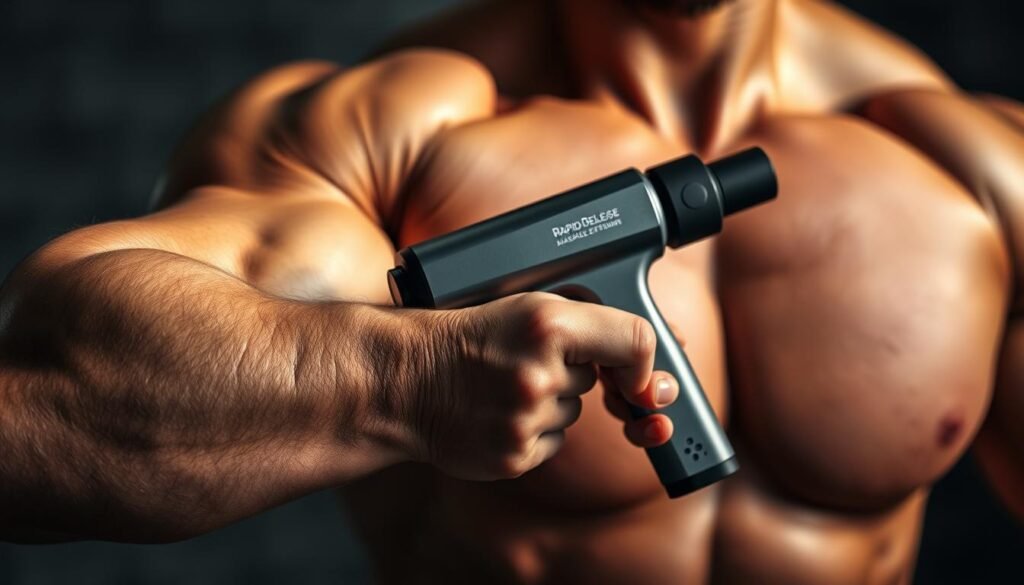
Six weeks into using this recovery tool, my morning routine transformed from stiff stretches to fluid movements. The changes crept up subtly—less wincing when lifting groceries, smoother shoulder rotations during swim workouts. This wasn’t magic, but science applied through consistent vibration therapy.
Real-World Results and Observations
My body responded faster than expected. Post-run recovery time dropped from 48 hours to 24—a game-changer for my weekend soccer matches. Chronic shoulder condition flare-ups became rare, with mobility tests showing 30% greater range of motion. The handheld deep tissue attachments proved essential for navigating sensitive areas like neck muscles without bruising.
As a weekend warrior, I appreciated how the vibrating muscle tool fit between work and play. Ten-minute sessions post-game kept stiffness at bay better than hour-long foam rolling. The real win? Preventing tension buildup rather than chasing relief after damage occurred.
Comparative Insights With Other Devices
Traditional body massagers paled in side-by-side tests. My old percussion device left quads tender, while this tissue vibrating approach dissolved knots gently. The table below captures key differences:
| Feature | Percussion Massager | Vibration Massager |
|---|---|---|
| Comfort Level | Aggressive | Controlled pulses |
| Recovery Speed | 2-day downtime | Same-day relief |
| Portability | Bulky design | Handheld convenience |
| Versatility | Limited attachments | 5 specialized heads |
While cheaper options exist, none matched this tool’s precision. For athletes and desk workers alike, it bridges the gap between professional treatment and DIY care—without the sticker shock.
Conclusion
This journey reshaped how I approach muscle care. The vibrating muscle massager outperformed traditional methods by addressing deep tissue tension I’d struggled with for years. Its precision transformed my recovery routine from reactive maintenance to proactive therapy.
Key advantages became clear: targeted trigger point relief, portability, and consistent results. Unlike generic rollers, the device’s rhythmic pulses dissolved stubborn knots without aggravating sensitive areas. It now sits beside my yoga mat—a non-negotiable tool for post-workout stiffness and desk-job aches.
While not a cure-all, it delivers value for athletes and casual users alike. Those with chronic tissue pain or limited mobility may benefit most. Just temper expectations—it complements stretching and hydration but won’t replace medical treatment for severe injuries.
As recovery tech evolves, vibration therapy bridges the gap between professional care and DIY solutions. For anyone tired of surface-level fixes, this approach offers science-backed relief that meets modern life’s demands.

